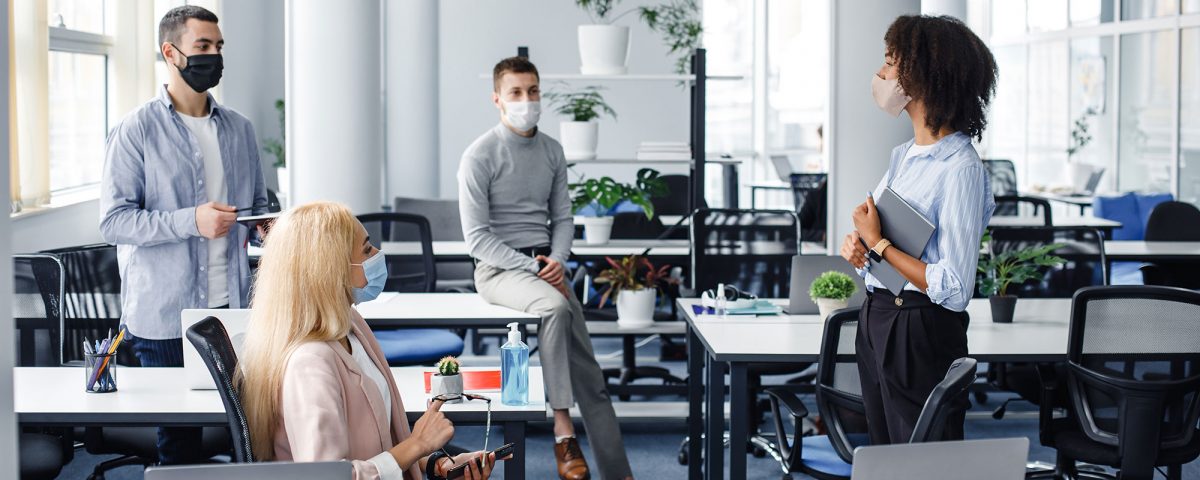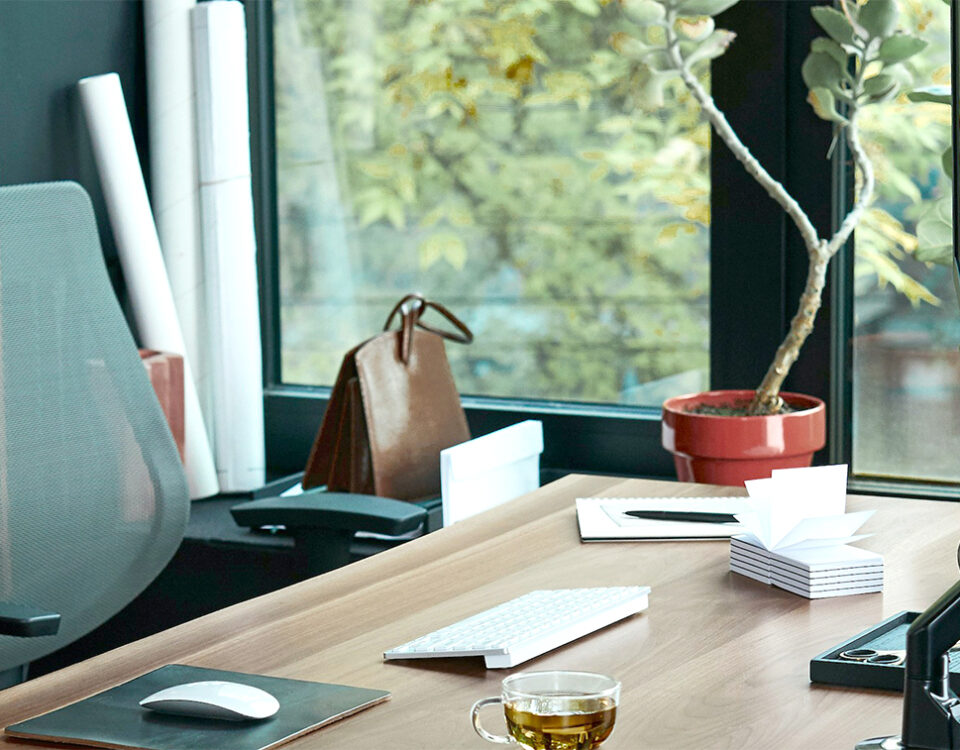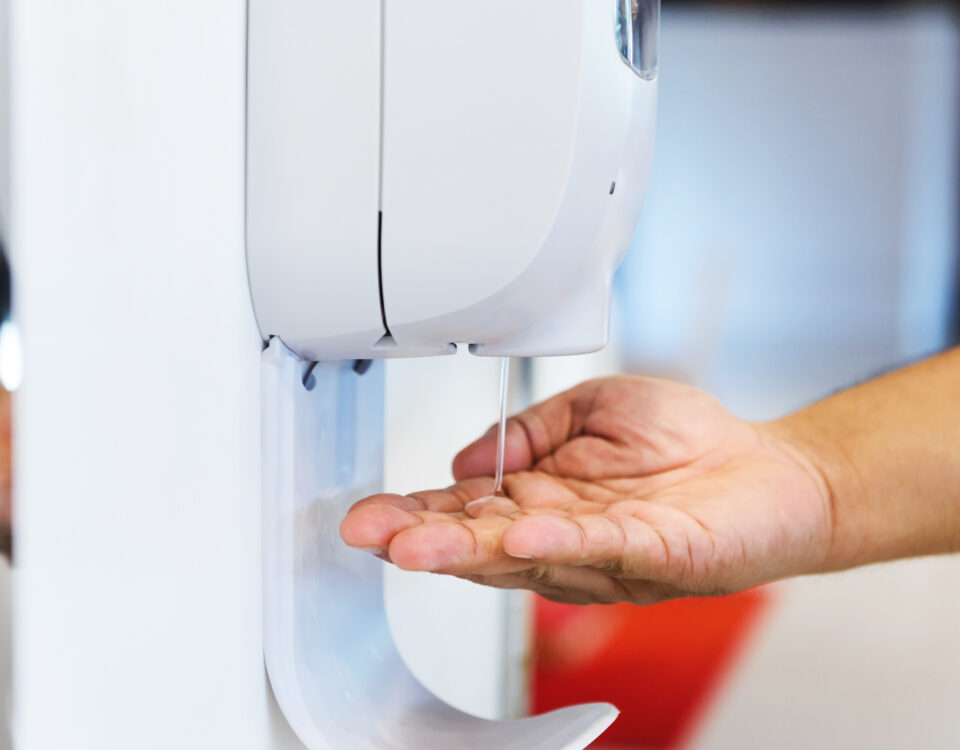Air Purifiers For The Workplace 101: What You Need To Know

Sourcing Essential Supplies During a Global Crisis
December 1, 2020
Healthy Snacks Allow Employees to Function at the Top of their Game
January 31, 2022READ TIME: 5 Min(s)
Ways to Stay Healthy:
✓ Washing your hands with soap for 20 seconds? Check.
✓ Properly wearing a face mask when entering public settings? Check.
✓ Staying six feet apart aka social distancing? Check.
✓ Working from home whenever possible? Check.
Now What?
As we grow more accustomed to the new norm, fatigue still looms as the COVID blues affect many across the world. However, we are starting to see glimpses of what seems to be the light at the end of the tunnel with vaccines being distributed and social distancing guidelines still effective today. As new variants show up, we must stay even more vigilant against the virus and to do so experts recommend the use of air purifiers to ensure a healthy and safe space for all.
Air quality has been in the spotlight in the fight against COVID-19 as filtration and ventilation play a key role in preventing the spread of the virus. Indoor settings such as shops, healthcare facilities, school organizations and businesses all need to make sure the people coming through the doors know they are safe. Let’s explore the in’s and out’s of air purifiers to make sure you know the facts before investing in one.
Welcome to Air Purifiers 101
There are two main categories for air purifiers — commercial grade and residential grade.
Commercial Grade Air Purifiers
Bigger buildings like retail spaces should be equipped with commercial grade air purifiers. Commercial grade purifiers have higher grade motors and components that give them the ability to run 24/7 along with many self-regulating features such as automatic performance adjustments, sleep mode, and fan speed depending on the presence of airborne contaminants and occupants.
Residential Grade Air Purifiers
Residential grade is designed for the home space. Residential grade air purifiers still get the job done at a lower price point but have fewer features in comparison.
Here are three main factors to consider when choosing the right type of air purifier:
- Cubic footage of space: calculate the total space you are trying to purify
- Air changes per hour (ACH): calculation of how many number of times air is replaced in a room hourly
- Room occupancy: how many people will be in the space at a given time
HEPA this, HEPA that…, What exactly is the meaning of HEPA?
High Efficiency Particulate Air is a type of mechanical air filter that captures harmful particles down to the virus level. To meet the standards of True HEPA, filters must capture particles down to .3 microns in size at a capture rate of 99.97%.
The American Society of Heating, Refrigerating and Air-Conditioning Engineers (ASHRAE) and Centers for Disease Control and Prevention (CDC) recommend the use of localized HEPA air filters to work in conjunction with heating, ventilation, and air conditioning (HVAC) to improve indoor air quality. This is significant even more in today’s world in re-opening areas of frequent human interaction. True HEPA filtration combined with carbon filtration and bipolar ionization meets and exceeds the re-opening guidelines of the CDC and ASHRAE.
How Do Air Purifiers Protect Against Virus Transmission?
Many harmful particles are in the air as H1N1, MERS, SATRS, and now COVID-19 are dangerous as the list goes on. Although an air purifier itself cannot solely do the job, installing an air purifier will help immensely along with the usual best practices against germ spread are prominent. Filters with the ability to remove air particles from 0.1-1 um will be effective in protecting people in an open indoor space.
Before you go ahead and start researching here’s what to look for when buying:
1) Four Stages of Filtration (or more)
-
- Pre-filters: capture the largest particulates and prolong the life of the other filters
- Carbon filters: to capture and remove odors
- True HEPA filters: to capture airborne contaminants to the virus level (should also be anti-microbial so that nesting of captured pathogens takes place
- Bipolar ionization: controlling odors, increase airborne particulate capture efficiency rate and renders inactive viruses/bacteria/mold spores
2) Environment Adjustment
-
- Technology that allows the unit to self-adjust performance levels to meet the environment conditions
3) Particle Count Display Screen
-
- % of clean air
- Levels of airborne contaminants entering the air purifier and being removed in the filtration process
4) Indoor Settings That Need an Air Purifiers
- Schools:
- Nurse offices
- Isolation rooms
- Classrooms
- Multi-purpose rooms
- Training rooms
- Faculty lounges
- Conference rooms
- Kitchens
- Restrooms
- Gyms
- Lockers
- Hallways
- Lobbies
- Personal office rooms
- Office Settings:
- Lobbies
- Reception/waiting areas
- Workstations
- Conference rooms
- Training rooms
- Labs
- Breakrooms – Kitchen/cafeteria
- Restrooms
- Individual rooms
It’s time for an upgrade to your workplace safety and get that extra protection you need. Guernsey will provide you with all the resources and optimal products to prioritize healthy and safety for any work environment.
Sources:
https://www.epa.gov/coronavirus/air-cleaners-hvac-filters-and-coronavirus-covid-19
https://www.cdc.gov/coronavirus/2019-ncov/community/ventilation.html




